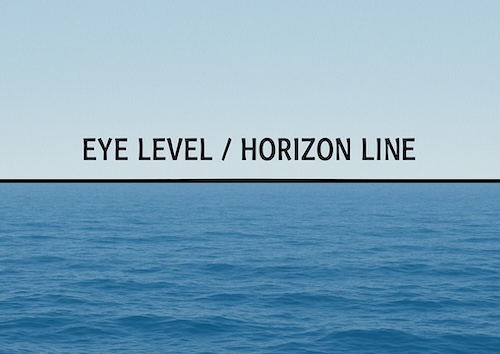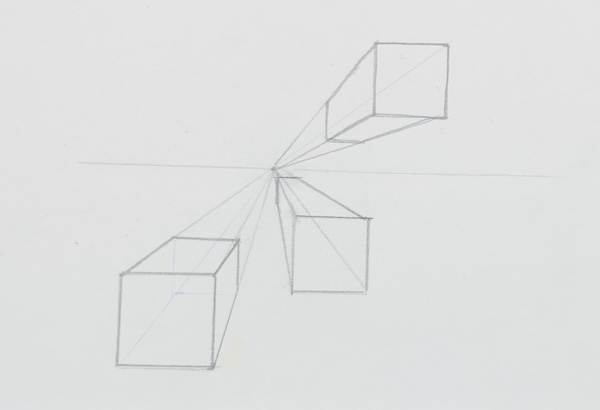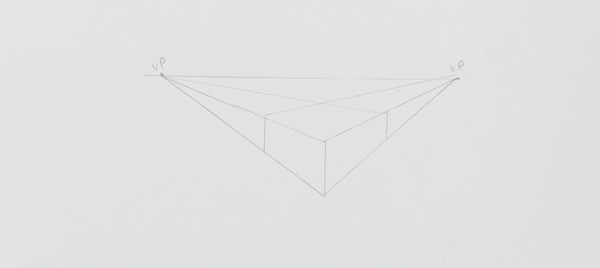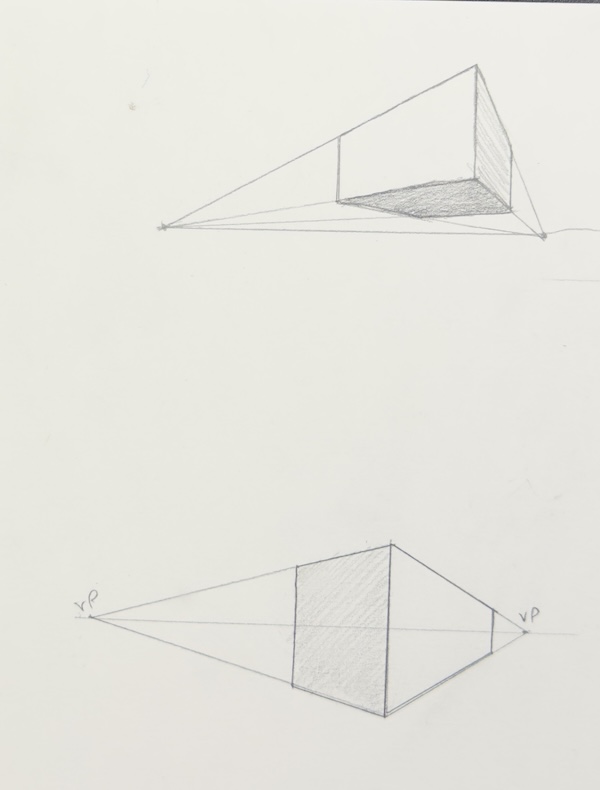- Home
- Fundamentals of Drawing
- Perspective
Basic Perspective Drawing for Coloured Pencil Artists (Made Simple!)
Perspective Doesn't Have to Be Scary!
Heard the word 'perspective' thrown around in art tutorials and felt a little bit worried or confused?
You're definitely not alone!
It's one of those topics that can sound really complicated, often taught with diagrams that look like complex maths problems.
But here's the good news: you absolutely don't need to become a perspective expert to make a huge difference in your drawings.
I promise, for the kind of beautiful, realistic coloured pencil art we're aiming for, we only need to get comfortable with a few simple, core ideas. My goal here is to keep it straightforward and practical for you.
Think of basic perspective as your secret weapon for avoiding common drawing frustrations – like buildings that look a bit 'wonky,' roads that seem to sit flat on the page instead of disappearing into the distance, or even a simple table that looks strangely tilted in your still life sketch.
It's the key to making things look believably 3D.
And why does that matter before you even start layering those lovely coloured pencils?
Because having a solid, structurally sound sketch underneath ensures your finished pencil piece looks convincing and realistic. It sets your beautiful colouring work up for success!
What is Perspective, Simply Put?
So, what is perspective in the art world, stripping away all the complexity?
At its heart, it's simply the way artists show three-dimensional (3D) objects and scenes on a flat, two-dimensional (2D) surface – like your piece of paper – so that they look like they have real depth and distance.
It's the visual technique that makes a drawing feel like you could step right into it!
There are different ways artists create this illusion.
On this page, we're focusing specifically on Linear Perspective. As the name suggests, this is all about using lines (both real and imaginary guiding lines) to figure out the correct angles and sizes of objects as they appear to get further away from you.
You might sometimes hear about 'Aerial Perspective' too – that's a different technique related more to how colour, value and detail change with distance (making things paler or hazier further away).
We touch on those ideas more in the sections on understanding value and colour basics, but for now, let's stick with how lines create that sense of depth.
The Two Most Important Ideas: Eye Level & Vanishing Point
Okay, now that we know what linear perspective is trying to do (create that 3D illusion!), let's look at the two most important building blocks you need to understand to make it work.
Honestly, get your head around these two simple ideas, and you're well on your way!
Your Eye Level (or Horizon Line)
First up is the Eye Level Line, sometimes called the Horizon Line.
Imagine you're standing on a beach looking out at the sea. That perfectly straight, flat line where the sea meets the sky? That's your eye level line, or horizon line. It's simply an imaginary horizontal line that sits exactly level with your eyes as you view the scene.
 Just like looking out at sea, the visible horizon line is a perfect real-world example of your eye level line – the crucial 'anchor point' for basic perspective drawing.
Just like looking out at sea, the visible horizon line is a perfect real-world example of your eye level line – the crucial 'anchor point' for basic perspective drawing."But what if I'm drawing something indoors, or a landscape where I can't see the actual horizon?" I hear you ask!
No problem. The eye level line is still there – it's just an imaginary horizontal line running across your scene at the height of your viewpoint (your eyes).
Think of it as the anchor point for everything else in your perspective drawing. If you draw things relative to this line, they'll look properly grounded and won't seem like they're floating strangely or tilting over.
 Indoors, the Eye Level Line remains the crucial horizontal line at your eye height. Vanishing points (which we'll discuss next) will always sit on this line.
Indoors, the Eye Level Line remains the crucial horizontal line at your eye height. Vanishing points (which we'll discuss next) will always sit on this line.Why does it matter? Because, as we'll see in a moment, the important 'vanishing points' (our next ingredient!) always sit on this eye level line. Get your eye level established first – just lightly draw a horizontal line across your paper where you imagine your eye level to be – and the rest becomes much easier!
The Vanishing Point (VP): Where Things Disappear
Our second key ingredient is the Vanishing Point, often shortened to VP.
Think about standing in the middle of a long, straight road or railway track and looking far into the distance.
You know the sides of the road or the tracks are parallel in real life, running alongside each other. But they look like they get closer and closer together until they seem to meet at a single tiny point way off on the horizon, right?
That point where parallel lines appear to meet and 'vanish' is the Vanishing Point!
 Just like looking down a straight road or railway tracks, parallel lines appear to converge at a single Vanishing Point (VP), which always sits on your Eye Level / Horizon Line.
Just like looking down a straight road or railway tracks, parallel lines appear to converge at a single Vanishing Point (VP), which always sits on your Eye Level / Horizon Line.So, a Vanishing Point is simply a spot (or sometimes more than one spot) on your eye level line where parallel lines moving away from you appear to converge.
Why does it matter? Because it tells you exactly what angle to draw those receding lines to make objects look like they are realistically getting smaller or going back into the distance in your drawing.
You use the VP as a target point to draw these lines accurately, creating that crucial illusion of depth.
Now we know the two key players – the Eye Level Line and the Vanishing Point(s) – let's see how they work together in the two basic types of perspective you'll use most often in your coloured pencil sketches.
Putting it Together: One-Point Perspective (Looking Straight On)
Right, let's put our Eye Level Line and Vanishing Point (VP) to work! The first, and simplest, type of perspective we'll look at is called One-Point Perspective.
When do you use it? You generally use one-point perspective when you are looking straight on at the main flat face of an object or the end of a space.
Imagine standing directly in front of a square box, looking down the length of a railway carriage, or viewing the far wall of a room head-on. The main front surface is flat and parallel to you.
How does it work? It's the most straightforward kind:
- Start by drawing that flat front shape (like a square or rectangle) that's directly facing you.
- Lightly draw your Eye Level Line across the paper where it makes sense for your viewpoint.
- Place a single Vanishing Point (VP) somewhere on that eye level line. For a simple symmetrical view (like looking down the middle of a road), the VP might be in the centre.
- Now, draw light 'guide' lines from the corners of your front shape back towards that single VP. These lines show the object receding or going back into the distance.
- Decide how 'deep' you want your object or space to be, and draw the back edges using those guide lines. The back edges should be parallel to the front edges (e.g., the back vertical line will be parallel to the front vertical line).
 Example of one-point perspective: Notice how positioning the box above, below, or crossing the Eye Level Line changes whether you see its top or bottom surfaces.
Example of one-point perspective: Notice how positioning the box above, below, or crossing the Eye Level Line changes whether you see its top or bottom surfaces.The key thing to remember with one-point perspective is that only the lines showing depth (the ones moving away from you into the distance) angle towards the VP.
The lines showing the height and width of the object stay perfectly vertical (straight up and down) and horizontal (straight side to side), just like the edges of your paper.
Connecting this to your coloured pencil art - One-point perspective is really useful when you're sketching the initial outlines for things like:
- A road, path, or railway track stretching directly away from you in a landscape.
- The inside of a room or hallway viewed straight-on.
- Simple buildings or sheds viewed directly from the front.
- Objects like books or boxes sitting flat and square-on in front of you in a still life setup.
Using simple one-point perspective helps you quickly create that sense of depth for these types of scenes, providing a solid structure before you begin layering your coloured pencils!
Adding Another Angle: Two-Point Perspective (Looking at a Corner)
Alright, you've grasped one-point perspective for those straight-on views! Now, let's look at the other basic type you'll likely use even more often: Two-Point Perspective.
When do you use it? You typically use two-point perspective when you are looking at the corner of an object, rather than straight onto a flat face. This means you can see two sides of the object receding away from you into the distance.
Think about looking at the corner of a house, a book standing upright on a table viewed from an angle, or a box turned slightly so you're not seeing its front face square-on. This is a very common viewpoint!
How does it work? (The Principles)
It uses the same core ingredients – the Eye Level Line and Vanishing Points (VPs) – but in a slightly different way:
- You still start with your horizontal Eye Level Line
- But this time, you place two Vanishing Points (VPs) on that line, usually positioned quite far apart (often near the edges of your picture area) to avoid distortion.
- Instead of starting with a flat face, you typically begin by drawing the closest vertical line, which represents the corner of the object nearest to you.
- The lines that represent the sides of the object receding into the distance then angle back towards these two VPs. Lines forming the left side head towards the left VP (VP1), and lines forming the right side head towards the right VP (VP2).
- Importantly, just like in one-point perspective, lines representing the height of the object (the vertical lines) usually stay straight up and down, parallel to the sides of your paper and to that first corner line you drew.
The diagram below shows this visually: You can see the corner closest to us, and how the top and bottom edges of the sides appear to angle back towards the two VPs on the Eye Level Line, while the vertical edges remain vertical.
 Notice how the vertical edges stay parallel, while the top and bottom edges angle towards the two Vanishing Points (VPs) on the Eye Level Line. This is the core idea of two-point perspective.
Notice how the vertical edges stay parallel, while the top and bottom edges angle towards the two Vanishing Points (VPs) on the Eye Level Line. This is the core idea of two-point perspective.Connecting this to your coloured pencil art:
Two-point perspective is incredibly versatile and probably the type you'll use most often when sketching the outlines for subjects like:
- Buildings viewed from a corner angle (essential for landscapes and townscapes!).
- Furniture such as tables, chairs, bookcases, or chests of drawers.
- Books standing upright or lying at an angle on a shelf or table.
- Boxes, packages, or blocks in a still life arrangement.
- Even drawing simple vehicles often uses these principles
Understanding basic two-point perspective really unlocks your ability to sketch a huge variety of common objects realistically before you start applying your beautiful coloured pencil layers, making your finished pieces look solid, grounded, and much more convincing.
Now that you understand the basic idea, the best way to get comfortable is to try it out in the simple step-by-step exercise that follows...
Let's Try It! Your First Perspective Sketch
Okay, reading about perspective is one thing, but the best way I find to really start understanding how it works is to quickly try drawing it yourself! Don't aim for perfection here – this isn't about creating a finished piece. This is just a simple exercise to help the ideas 'click' in your mind and hand.
Grab a piece of scrap paper and a pencil (any pencil will do!).
Let's draw a simple box shape together using two-point perspective, like the corner view we just talked about. It’s easier than you might think!
Ready? Here we go:
- Draw Your Eye Level Line: Lightly draw a horizontal line across your paper. Remember, this is your Eye Level Line (EL).
- Place Your Vanishing Points (VPs): Place two dots on your Eye Level Line. Put them quite far apart, towards the left and right edges of your paper. Label them VP1 and VP2. (Putting them far apart helps prevent your box looking too distorted).
- Draw the Front Corner: Now, decide roughly where you want your box to sit in relation to your eye level. Below it? Above it? Crossing it? Draw a single, straight vertical line somewhere between your VPs. This will be the front corner of your box that's closest to you.
- Connect to VPs (Guide Lines): This is the key step! From the top of that vertical line you just drew, lightly draw a straight line connecting it all the way to VP1. Then draw another light line from the top connecting it to VP2. Now do the same from the bottom of the vertical line – connect it lightly to VP1 and VP2. You should now have four light 'guide' lines heading off towards your VPs.
- Draw the Back Edges: Now, decide how 'wide' you want the left side of your box to be. On the guide lines heading towards VP1, draw a vertical line (parallel to your first corner line) to mark the back edge of that side. Now decide how wide you want the right side to be, and draw another vertical line on the guide lines heading towards VP2, again making it parallel to your first corner line.
- Finish the Top/Bottom (if visible): If your first vertical line didn't cross the Eye Level line, you'll see either the top or bottom of your box. To draw the back edge of the top (if your box is below EL), connect the top-left back corner to VP2, and the top-right back corner to VP1. (If your box was above EL, you'd do this for the bottom corners). These lines should meet nicely at the back!
And that's it! You've drawn a basic box in two-point perspective!
Does it look perfectly neat and tidy? Maybe not on the first try, and that's completely okay! The most important thing is that you followed the steps and saw how the lines connect to the vanishing points on the eye level line to create that believable 3D shape.
Why not try drawing a few more simple boxes on your scrap paper? Place the first vertical line above the eye level line for one, maybe crossing it for another, just to see how the view changes. Getting comfortable with this simple exercise by repeating it a few times is a fantastic way to build your confidence with perspective!
 Keep practicing! Try drawing boxes from different viewpoints, like these examples viewed from above and more front-on, to see how perspective changes things.
Keep practicing! Try drawing boxes from different viewpoints, like these examples viewed from above and more front-on, to see how perspective changes things.Key Takeaways & What's Next
So, let's quickly recap the absolute basics of linear perspective we've touched on here:
- Perspective is simply our artist's way of creating a believable feeling of 3D depth and distance on our flat drawing paper.
- The Eye Level Line (or Horizon Line) is your crucial anchor point – it represents your viewpoint height and keeps things looking grounded.
- Vanishing Points (VPs) are spots on the eye level line that guide the angles of parallel lines as they recede away from you.
- We use One-Point Perspective for straight-on views (like looking down a road) where receding lines go to one VP.
- We use Two-Point Perspective for corner views (like the corner of a building) where receding lines go to two VPs.
See? When you break it down, it's not nearly as complicated as it sometimes seems!
Remember, perspective isn't about getting tangled up in rigid, complicated rules. Think of it as a helpful tool in your artist's toolkit.
Just understanding these simple basics of eye level lines and vanishing points can make a massive difference in making your initial sketches for your coloured pencil pieces look much more solid, believable, and realistic.
My best advice? Keep practicing drawing those simple boxes whenever you have a spare moment! It might feel repetitive, but it genuinely helps these concepts sink in and become much more intuitive over time.
Don't stress about making them perfect, just focus on applying the steps and ovserving the results.
Ready to put all these foundations into practice with your pencils?
Having worked through the essential concepts in this Foundation Skills Hub – from basic principles and value, through colour, composition, planning, using references, and now perspective – you've built a really solid understanding. Be proud of yourself for investing this time in the fundamentals!
Now you're perfectly prepared (and probably very eager!) to dive into learning the specific techniques for applying all this knowledge using your wonderful coloured pencils.


